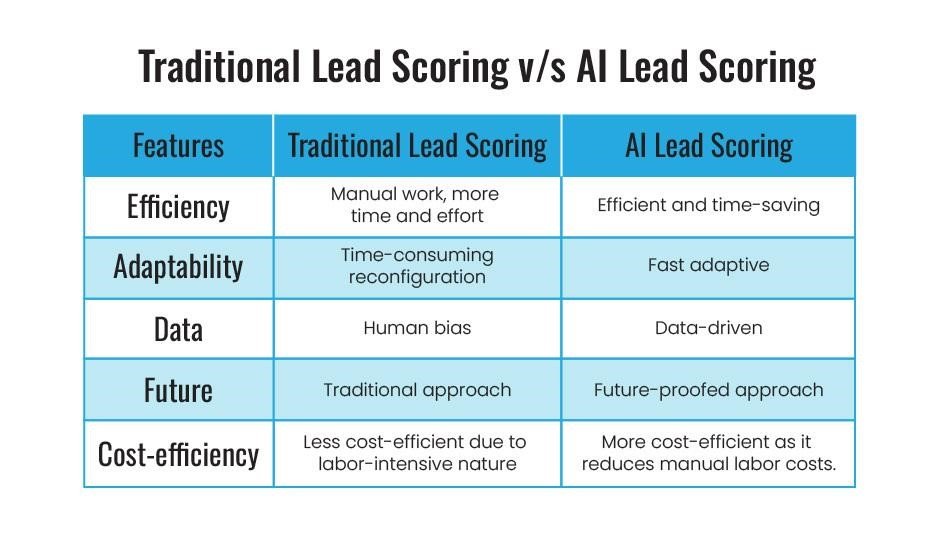Mastering Social Selling for Demand Generation: A Step-by-Step Guide
Transform your demand generation with our social selling guide, crafted for advanced marketers and sales professionals.
Table of Contents
1. Understanding Social Selling for Demand Generation
1.1 What is social selling?
1.2 Social Selling as a Demand Gen Powerhouse
1.3 B2B Advantages: Why Social Selling Matters
2. Setting up the Foundation
2.1 Optimizing Your Social Arsenal
2.2 Targeting the Right Prospects
3. Content Strategy and Development
3.1 Creating High-Value Content
3.1.1 Types of Content:
3.1.2 Mapping Content to the Buyer’s Journey:
3.2 Leveraging User-Generated Content
3.2.1 Promote Customer Stories
3.2.2 Enhance Credibility and Trust
4. Engaging with Prospects
5. Utilizing Advanced Tools and Technologies
5.1 Social Selling Platforms
5.1.1 Overview of Key Tools
5.1.2 Linking Social Selling Tools with CRM
5.2 Automation and AI
5.2.1 Applying AI to Personalize and Optimize Interactions
5.2.2 Automation for Posting and Monitoring
6. Measuring and Optimizing Efforts from an AI Angle
6.1 Key Metrics and KPIs
6.1.1 Metrics to Track
6.1.2 Tools for Analytics and Performance Measurement
6.2 Continuous Improvement
6.2.1 Regularly Reviewing and Adjusting Strategies
6.2.2 Implementing Feedback Loops for Constant Optimization
7. Driving Future Success Through Social Selling
Social media is not a connection tool only; it is a potent demand-generation mechanism. Social selling uses these channels to foster relationships, create relevance, and ultimately funnel leads to your business.
It is intended for senior-level marketing and sales executives who already have a grasp of what social media marketing is all about. That is where we will go further and describe the step-wise process of creating an efficient social selling strategy to generate the highest level of demand.
1. Understanding Social Selling for Demand Generation
The traditional demand generation approaches are simply no longer viable. This brings us to social selling, which is a more strategic approach whereby social media is used to nurture and sustain prospects.
1.1 What is social selling?
Social selling is not just a process of forwarding messages along the lines of informal organizational communication. That is another function of social media management: creating an authoritative profile on the sites that actively communicate with your audience. This can be achieved through:
Content Sharing: Regularly share valuable information and articles that pass on knowledge to the readers.
Thought Leadership: Offer your expertise in the subject as a specialist; provide information to the target audience.
Relationship Building: Proactively seek customers out and learn their conditions and, if possible, the possibilities of solving them.
1.2 Social Selling as a Demand Gen Powerhouse
Social selling seamlessly integrates with your demand-generation strategy by:
Warming Up Leads: Interaction helps in the pruning of leads, and hence their reception of the communication is much higher.
Boosting Brand Awareness: Social media spreads awareness of the brand and helps to position it as an expert in the industry.
Building Trust and Credibility: Engaging with the leads in a natural way is always effective in building trust, hence turning them into paying clients.
1.3 B2B Advantages: Why Social Selling Matters
In B2B marketing, especially for complex markets, social selling is the most useful. Here’s why:
Targeted Outreach: Utilizing social media platforms eases the targeting process since the posts reach the intended decision-makers.
Long-term Relationships: B2B sales cycles are actually long. Social selling supports the fostering of the relationship cycle.
Industry Expertise: Social media lets you demonstrate your expertise in
Implementing social selling as part of your demand generation strategy strengthens and solidifies your position with the target audience.
2. Setting up the Foundation
2.1 Optimizing Your Social Arsenal
Craft professional bios on LinkedIn and other platforms, highlighting your expertise and value proposition. Ensure consistent branding across all social channels for a cohesive online presence.
2.2 Targeting the Right Prospects
Utilize databases and analyses to determine more specific and concise customer segments. To optimize content and approach, adjust it to the created buyer personas, which include online behavior and interests.
3. Content Strategy and Development
3.1 Creating High-Value Content
3.1.1 Types of Content:
Create a combination of informative content that would be appealing to numerous readers. Consider articles that present ideas and opinions to be considered, the client’s testimonials (testimonials), a comprehensive report, and graphic information.
3.1.2 Mapping Content to the Buyer’s Journey:
Ensure that you provide content that is relevant to the stage in the buyer’s journey that the buyer is in. Capture targets with articles, prove value with case studies, and solve problems with white papers. To do so, it is possible to use infographics from time to time to capture the learners’ attention.
3.2 Leveraging User-Generated Content
3.2.1 Promote Customer Stories:
Urge customers to write testimonials about your products. Such testimonial origin warrants real-life success stories and is something that clients would be inclined to buy.
3.2.2 Enhance Credibility and Trust:
Share user-generated content on social media. Real stories build trust and act as endorsements, influencing buying decisions.
High-value content and user-generated content are powerful tools for social selling. They keep the prospects informed, build trust, and ultimately drive sales.
4. Engaging with Prospects
Social media monitoring tools enable you to identify discussions people are having in your industry and those of your competitors. They can also help in finding out the audiences that may be interested in the content under discussion. This way, by analyzing this data in real time, you can adapt the approaches and the content of the messages that you are providing to them.
To engage more effectively, try to address the conversation in a way that each individual will find relevant to their current needs and problems. Using tracking platforms like the LinkedIn Sales Navigator and the HubSpot CRM can be of great help in identifying prospects and engaging with them.
5. Utilizing Advanced Tools and Technologies
5.1 Social Selling Platforms
5.1.1 Overview of Key Tools:
LinkedIn Sales Navigator: Improves lead capture by having enhanced search capability, personalized information about the leads, and real-time updates of the same.
Hootsuite: maintains and engages different social media profiles and posts and follows brand mentions at once.
Buffer: It organizes the posting schedule, offers metrics, and determines the best time for new content to get the most interaction.
5.1.2 Linking Social Selling Tools with CRM:
Integrate your social selling tools with your CRM to consolidate prospect data, including their social media engagement. Platforms such as HubSpot CRM and Salesforce are compatible and quite famous in this regard.
5.2 Automation and AI
5.2.1 Applying AI to Personalize and Optimize Interactions:
Using AI to analyze the data and then make the appropriate recommendations and content based on the customer’s preferences from previous articles read. Tools such as Conversica or Drift are a cure for it.
5.2.2 Automation for Posting and Monitoring:
Employ social media schedulers such as Buffer and Hootsuite to increase the efficiency of posting and analyzing activity. This is time-saving and maintains continuity in your social selling engagements.
With the right tools and technology, social selling needs to be applied as a demand-generation strategy. Such tools not only help reduce costs but also help in achieving better ways of prospect engagement, hence building strong relations between a firm and its prospects, thus resulting in good sales.
6. Measuring and Optimizing Efforts from an AI Angle
6.1 Key Metrics and KPIs
6.1.1 Metrics to Track:
Engagement Rates: Using AI, it is possible to analyze the number of activities in the form of likes, shares, comments, and affixations on posts on social media. These algorithms will enable a better understanding of what types of content are gaining acceptance and popularity with customers.
Lead Generation: AI can record new leads either created or gathered through social selling. The AI tool can also be used to analyze leads and determine which strategy is more useful in lead generation.
Conversion Rates: Leverage AI to track the percentage of leads generated who end up being customers. Leverage conversion results found using AI tools to identify variables that affect positive conversion and know how to design strategies in the method.
6.1.2 Tools for Analytics and Performance Measurement:
Google Analytics with AI Enhancements: Apply machine learning to predict future trending shifts and changes in user behaviors with the key strategy adjustments being implemented.
HubSpot: integrate AI/ML capability in the prediction of behavioral patterns attributed to performance and recommend improvements to better engagements and conversion rates.
Salesforce Einstein: Use AI in the prediction of behavioral patterns related to performance and recommend improvements for better engagements and conversion rates.
6.2 Continuous Improvement
6.2.1 Regularly Reviewing and Adjusting Strategies:
AI can analyze performance data for businesses and provide recommendations at any given time. This means that you can make very many changes in your business strategies much more often and in a more informed manner. The use of AI tools means that there are occasions to alter your approach with the latest data trends.
6.2.2 Implementing Feedback Loops for Constant Optimization:
Integrate feedback loops in order to maintain continuous improvement through the use of AI. Feedback from several sources, such as sales teams, marketing campaigns, and customers, can be collected and analyzed by the AI power of organizations. Such a continuous process allows for the consolidation of strategies based on such data, hence making your social selling strategies responsive.
If AI can be applied to measure and optimize social selling, then a vast upgrade can be made. AI not only offers detailed analysis but also brings heavy learning to help enhance the demand generation process.
7. Driving Future Success Through Social Selling
Social selling is now the new trend for achieving success in the B2B market. It’s more efficient, effective, and fosters better relations with clients than traditional methods.
Adaptation is key.
The embrace of social selling will be the key to success for organizations. It strengthens relationships and works faster than conventional communication tactics.
Long-Term Initiative:
Social selling is not a one-time thing that can be done and forgotten in a few days or weeks. It is, rather, an ongoing process. It is most effective when used in conjunction with other sales and marketing campaigns.
Adopting social selling helps to make sure that B2B sales strategies stay relevant and helpful. It is a long-term investment that will help keep your organization relevant and competitive in the current, ever-growing digital world.
Visit Our SalesMarkBlog Section to Uncover the Sales Strategies That Ignite Your Sales Journey!











